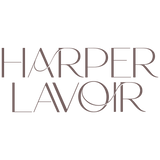
The first step in our design process is fabric sourcing. We wanted to use a sustainable, natural fibre that would be durable, yet super soft on the skin. That's why we chose 100% RWS certified merino wool, which provides so many benefits, such as being thermoregulating, naturally stretchy, crease resistant and 6x stronger than cotton - perfect for luxury, transeasonal pieces.
Using wool from a RWS certified farm was non-negotiable for us. This certification ensures ethical treatment of sheep and strictly prohibits mulesing. It promotes sustainable land management practices that protect soil health, biodiversity & water resources. It also ensures fair wages, safe working conditions and compliance with labour laws to ensure farm workers are treated fairly and ethically.


This process is where the wool is twisted and spun into yarn, which will be later used to knit our garments. A spinning machine stretches, spins and then twists the wool fibres together into strong, high quality yarn.
Our yarn makers are based in Italy and with continuous investments in machinery that reduce their environmental impact, together with a careful selection of their partners and the certifications they've received over the years, they really are a role model in the sustainability field.
To preserve water and energy, they have equipped their mill with a purification plant that reduces their water usage and photovoltaic solar panels to use renewable energy.


As wool is such an intricate fibre, the development of knitwear is a complex process. The fit of our wool pieces took months and several rounds of sampling to perfect. Each tiny measurement and detail of the garment is then entered into our machine software, that digitally creates the pattern for the knitting machine to produce.
Knitting takes place at our independent studio in England. The bodies of our pieces are made as seamless whole garments on a Shima Seiki Whole Garment machine. Whole Garment technology produces high quality, durable pieces without waste, which are then ready for the linking process.


Once the bodies of our pieces have been knitted, this is where the sleeves are hand-linked. Linking is always done manually and it’s the part of the process that takes the most time.
It’s now time to add our signature Harper Lavoir neck and care labels and to be perfectly washed and steamed, ready to be carefully packaged up to our customers.

